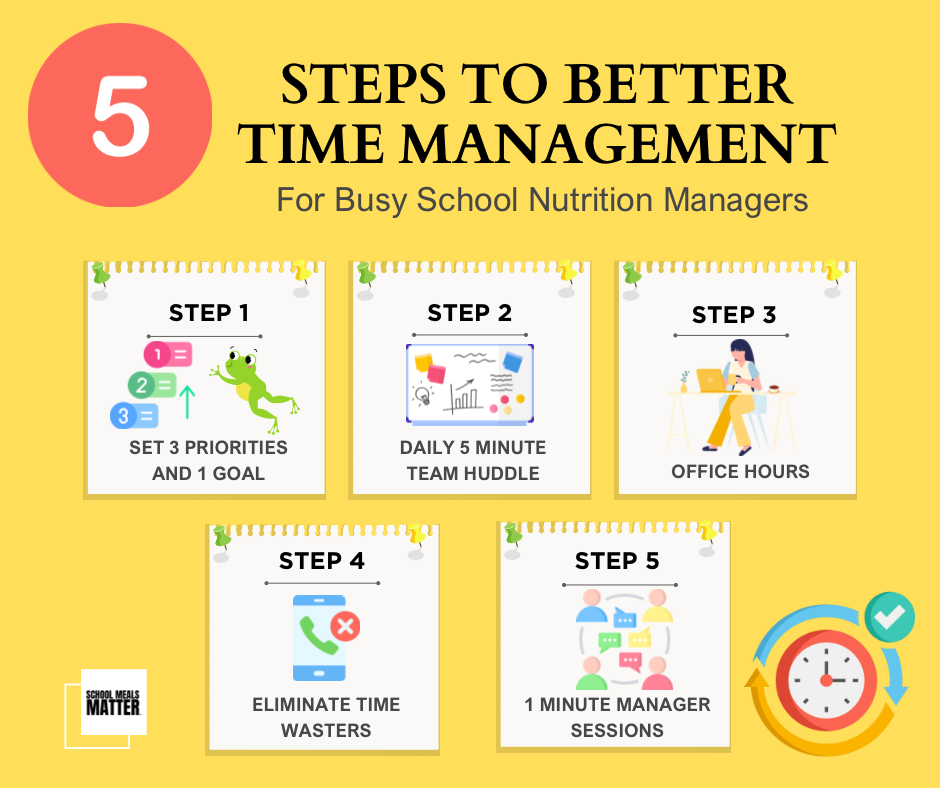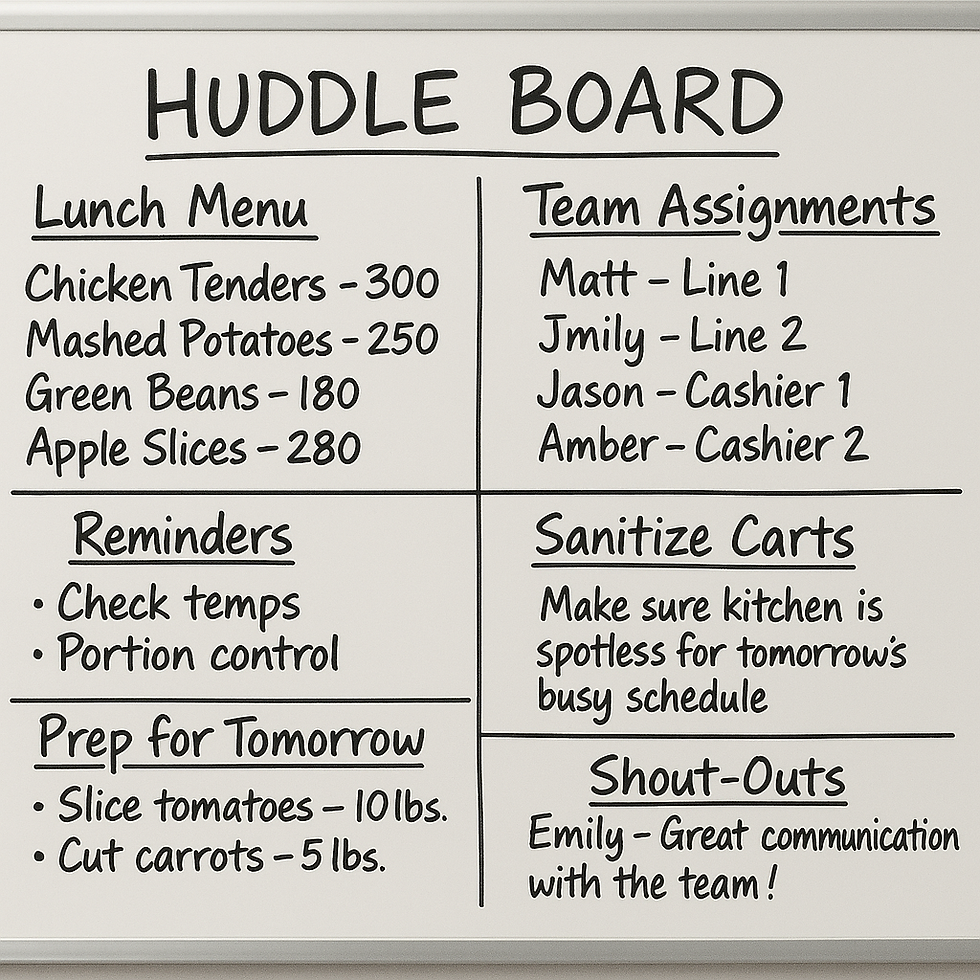5 Steps to Better Time Management
- Kathleen Kane, SNS
- Aug 15
- 3 min read
Updated: Aug 18
School nutrition managers juggle more than most people realize—menus, staff, equipment issues, paperwork, last‑minute changes and all while performing kitchen and service duties. With so much to manage, time can slip away fast. These five simple steps will help you organize specific blocks of time, reduce stress, and keep your day on track.

Step 1: Identify and Prioritize the Right Tasks (Eat the Frog)
To control your day, start by knowing what matters most. Each morning, ask yourself:
What absolutely must happen today for service to succeed?
What deadlines or reports are due?
Are there staff or equipment challenges that need quick attention?
What leadership moments—coaching, recognition—should happen today?
Then write down:
3 Priorities:
Confirm staffing coverage for lunch
Place produce order
Review payroll before deadline
1 Goal:
Organize storeroom
Eat the Frog: Do your hardest priority first—in this case, placing the produce order if it’s the most urgent.
Breaking a Goal into Smaller Tasks: For example, a goal like Organize storeroom can be broken down like this:
Day 1: Clear and label one shelving unit
Day 2: Sort canned goods
Day 3: Arrange dry goods by category
Day 4: Check expiration dates and rotate stock
Day 5: Sweep and reset floor space
Adding one step to your daily list keeps progress moving without overwhelming your day.
Step 2: Team Huddle
Spend five minutes at the start of every day aligning your team. Use a whiteboard as a huddle board to share:
The day’s menu
Staff assignments and coverage changes
Deliveries or upcoming events
Any potential challenges spotted in Step 1
This short huddle prevents repeated questions, gives clear direction, promotes accountability because everyone's duties are listed and helps identify potential issues before they happen.

Step 3: Dedicated Office Hours
Set aside structured office hours:
Morning Office Hours (30–45 minutes):
Complete/update huddle board
Place immediate orders
Review day’s plan, check deliveries, confirm staffing
Respond to urgent messages
Afternoon Office Hours (60 minutes):
Forecast for upcoming service days
Prepare orders for tomorrow
Count money, complete reports, update production records
Review and adjust plans for the next day
Why this matters: Working ahead means you’re making decisions when you’re calm and focused—not in a rush. Forecasting early allows for menu adjustments, reduces waste, and avoids last‑minute scrambles.
Time Saver Tip: Need to promote a special menu in your school newsletter? Ask chatGPT or other AI source:
“Write one paragraph for a school newsletter announcing a special ‘Taste of Italy’ menu next Thursday in the cafeteria, highlighting the menu items in a friendly, inviting way for families and students.”
You’ll get a polished paragraph in seconds—saving you 10-15 minutes or more of writing time.
Step 4: Eliminate Time Wasters
Interruptions: Save non‑urgent questions for after meal service.
Searching for things: Label and assign tool/storage spots.
Redoing work: Give clear instructions once.
Perfectionism: Good and done beats perfect and late.
Failing to delegate: Training takes time once but saves time daily.
2‑Minute Rule: If it takes less than two minutes, do it now.
Step 5: One Minute Manager Sessions
These are short, purposeful walk‑throughs:
Observe: Watch how work is being done—look for successes and potential problems.
Praise Immediately: “Maria, great job keeping the serving line moving fast during the rush!”
Coach Quickly: “Tom, keep the cooler door closed between uses—it will hold temp better.”
Be Specific: Point out the exact behavior you want repeated.
Daily micro‑coaching keeps your team on track without lengthy meetings.

Final Thought
Time management isn’t about doing more—it’s about doing the right things, at the right time, in the right way. Eat the frog first, align your team with a 5‑minute huddle, protect your office hours, eliminate time wasters, and lead with short, effective coaching sessions. You’ll end your day calmer, more productive, and ready for tomorrow.





Comments